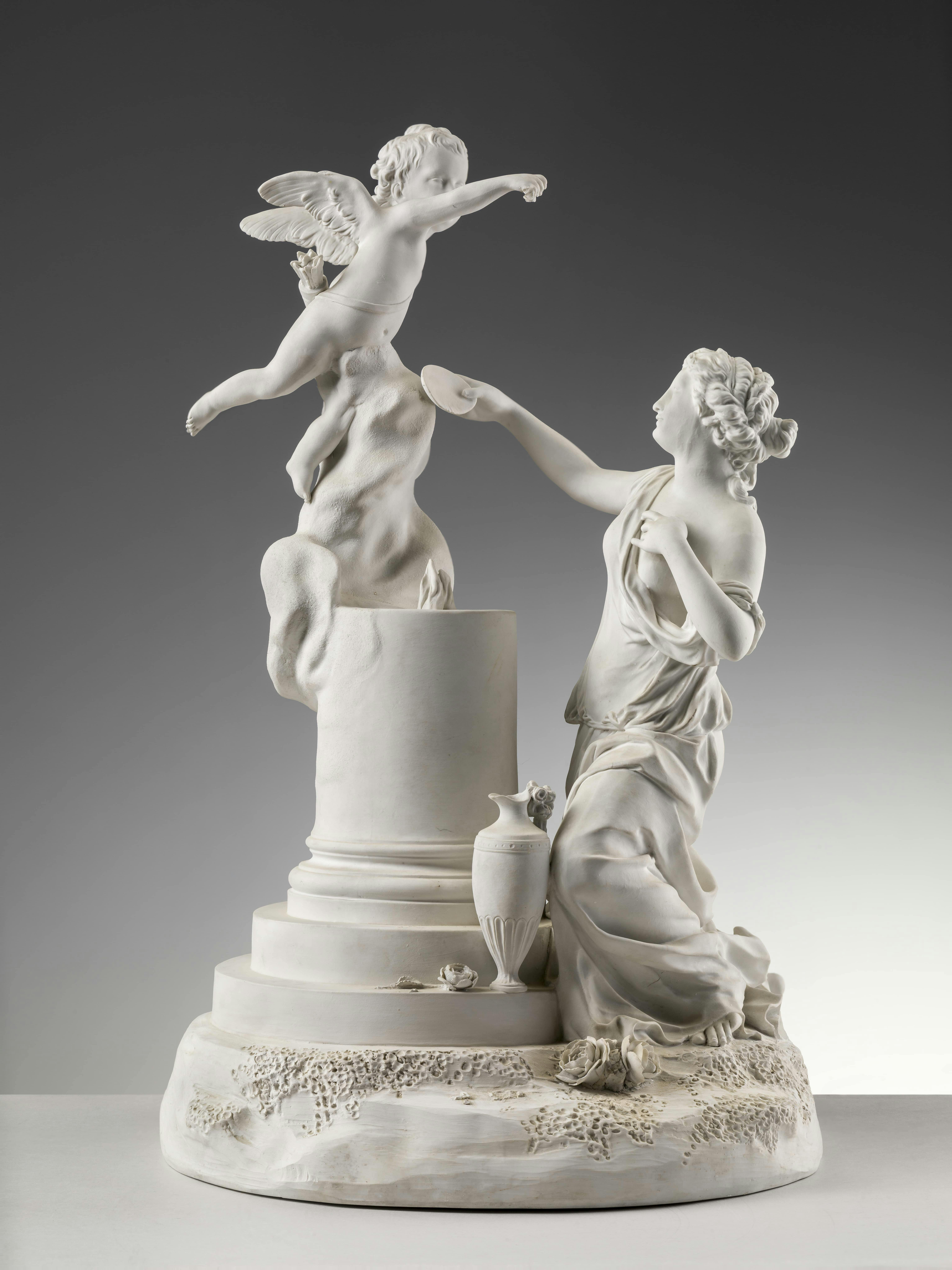Love Offering
Anton Grassi and Imperial Porcelain Manufactory, Vienna
The specimen depicts a young girl kneeling in the act of offering her heart (understood as fidelity and devotion) to the sacred fire of life in the temple of Vesta, goddess of the hearth. Above her twirls Cupid, supported by clouds. The composition was inspired by L' Offrande à l'Amour, modelled in 1776 by Louis-Simon Boizot for the Sèvres Factory, which in turn was a reworking of the painting of the same title by Jean-Baptiste Greuze exhibited at the Salon in 1769. In fact, also in other subjects the Imperial Manufacture revealed the influence of the French one, to which we owe the primacy of the introduction of biscuit in sculpture production.
These sculptural groups were used as centrepieces in the decoration of banquets and were accompanied by small statues with genre subjects, in some cases alluding to allegories of the Seasons. Examples of this are preserved in the Porcelain Museum, together with the dessert service purchased by Grand Duke Peter Leopold Habsburg-Lorraine, for whom they were destined (inv.Silverware with valuation 1911 nos. 710-726, 143-144, 152, 160, 151, 166).
The fashion of decorating tables, for particular ceremonies, with imposing sculptural groups was already in use in the previous century and through these were narrated religious episodes, or represented mythological scenes taken mainly from Ovid's Metamorphoses. We can think, for example, of Giambologna's creations for the wedding dinner of Maria de' Medici and Henry IV of France, or the sugar compositions, also of his invention, made by Pietro Tacca.
During the period of Conrad von Sorgenthal's directorship of the Vienna Imperial Porcelain Manufactory (1784-1805) there was an increase in the production of sculptural groups in line with neoclassical taste, both in the choice of subjects and in the working of biscuit porcelain, which visually approximates the purity of marble. These groups are referred to the invention of Anton Grassi, who between 1765 and 1774 was educated at the Academy of Fine Arts and in 1778 began working at the factory as an assistant to the chief modeller Johann Josef Niedermayer, a position he inherited in 1784.
